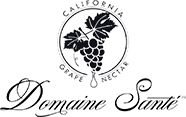Glucose and fructose are the two types of sugars found in just about everything. However, there is a third entity that sneaks into your food items, we call this baby sucrose. What is sucrose? Read on and we’ll find out.
Glucose
What is glucose? A simple sugar and monosaccharide that is obtained through food but also produced by the body as needed. The building blocks of all things carbs, it is our body’s preferred energy source. As we eat, the body stores glucose to use in the future, however, when we do not eat or are sleeping, the body is able to produce glucose through a process called gluconeogenesis.
Many commercialized foods have created offsets of glucose that alter its natural state. Glucose syrup, for instance. This is made from cornstarch, so it is essentially the same as corn syrup. Added to many processed snacks, condiments, beverages, breads, yogurt, etc, yet it is best to eat pure forms of glucose to avoid weight gain.
High-glucose foods:
- Honey
- Granola
- Balsamic vinegar
- Wine grapes (wahoo!)
- Dried fruit
- Soda and juices
Glucose and fructose may sound similar, but we all know words can be deceiving...
Fructose

What is fructose? Fruit sugar, most commonly found as high-fructose corn syrup. If not found naturally in food, this sugar source come from sugar beets, corn, and sugarcane. Often cornstarch is added to these as a thickening agent. Fructose doesn’t raise blood sugar as much as other sugar, but it does need to be converted to glucose before able to be metabolized. Too much fructose becomes excess triglycerides and cholesterol. This means that fructose is the sugar source that is most likely to cause obesity, metabolic syndrome, type 2 diabetes, and liver disease.
Fructose is a monosaccharide that is not produced within the body, whereas glucose is. Hence why our bodies convert it to glucose before we can digest it. Often, fructose increases symptoms of hunger as it only momentarily keeps you full. Constant fructose intake activates the reward pathway in your brain, causing sugar addiction.
High-fructose foods:
- Agave nectar
- Condiments/sauces
- Cereals
- Salad dressing
- Table grapes, but not wine grapes
- Dried fruit
Sucrose

What is sucrose? Table sugar. Sucrose is actually both fructose and glucose. It is a disaccharide because it combines the two simple sugars by a chemical bond. Providing quick energy, it is digested almost instantaneously by the body which usually leads to a fairly large sugar crash. The cane sugar you have in your pantry… pure sucrose. It’s in most baked goods, commercial snacks, and even fruits and veggies. So sucrose isn't just a component of processed foods, natural foods like it also. The important thing to practice is eating sucrose-rich foods in their natural state, and not when formed as a result of processed foods. Foods that naturally have sucrose in them, mangos for example, also contain nutritious fiber that slows the rise of blood sugar. Choose these over processed, artificial foods.
High-sucrose foods that you should avoid:
- Fruit juice drinks
- Sweet sauces
- Cookies
- Cake
- Milkshakes
- Pudding
- Cereal
- Pre-packaged meals
- Instant pancakes
Knowing the sucrose definition helps to be conscious of what and how much of certain food items you munch on. Just remember: fructose + glucose = sucrose
Fructose, Glucose, and Sucrose - Why Choose One and Avoid the Other
Funny thing is, fructose, glucose, and sucrose all contain the same calories per gram. Sweetness wise: fructose is the sweetest, then sucrose, followed by glucose. Each is a carbohydrate that fuels our bodies with energy. However, the way our bodies react to each is what makes one better than the other.
Glucose is your best bet when claiming one sugar as better than the others. Sucrose takes longer to digest and metabolize, yet occurs in many natural and whole foods which do not need to be avoided. Remember: it does contain 50% glucose so it can’t be that bad. Fructose, however, is the most harmful of the three due to its tendency to promote weight gain and increase feelings of hunger.
The Bottom Line
Eat whole foods that are not at all or minimally processed.
Steer clear of foods with added sugars and artificial sweeteners
Don't limit your fruits and vegetables
Opt for Grape Nectar, the healthiest alternative sweetener made of 100% CA wine grapes!
Get your Grape Nectar today!SHARE




